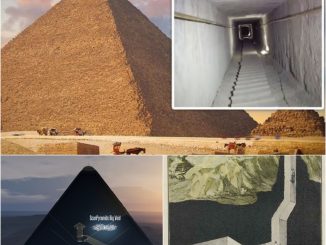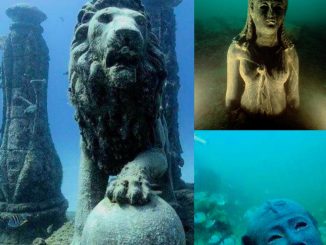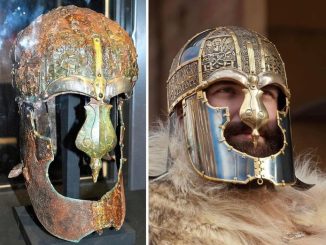In the annals of ancient Egypt, few names shine as brightly as Thutmose III. Known as the Napoleon of ancient Egypt, he expanded the Egyptian empire to its greatest territorial extent. His reign marked a golden age of prosperity, art, and military conquest. Among the artifacts that bear witness to his legacy stands a remarkable piece—a statue carved from indurated painted limestone. Crafted during the New Kingdom, 18th Dynasty, around 1479–1425 B.C., this statue of Thutmose III was discovered in Deir el-Bahri, within the Temple of Mentuhotep II in Upper Egypt. However, this masterpiece of antiquity is not whole, torn between two great nations—until a remarkable act of cooperation bridged the divide.

The indurated painted limestone statue of Thutmose III is a testament to the skill and artistry of ancient Egyptian craftsmen. Standing tall, the figure exudes authority and majesty, capturing the essence of a pharaoh at the height of his power. The intricately carved details of the Nemes headdress, adorned with the uraeus symbol, symbolize divine king ship and protection. The facial features, though separated from the body, bear the serene yet commanding visage of Thutmose III, a ruler whose conquests reshape the map of ancient Egypt.
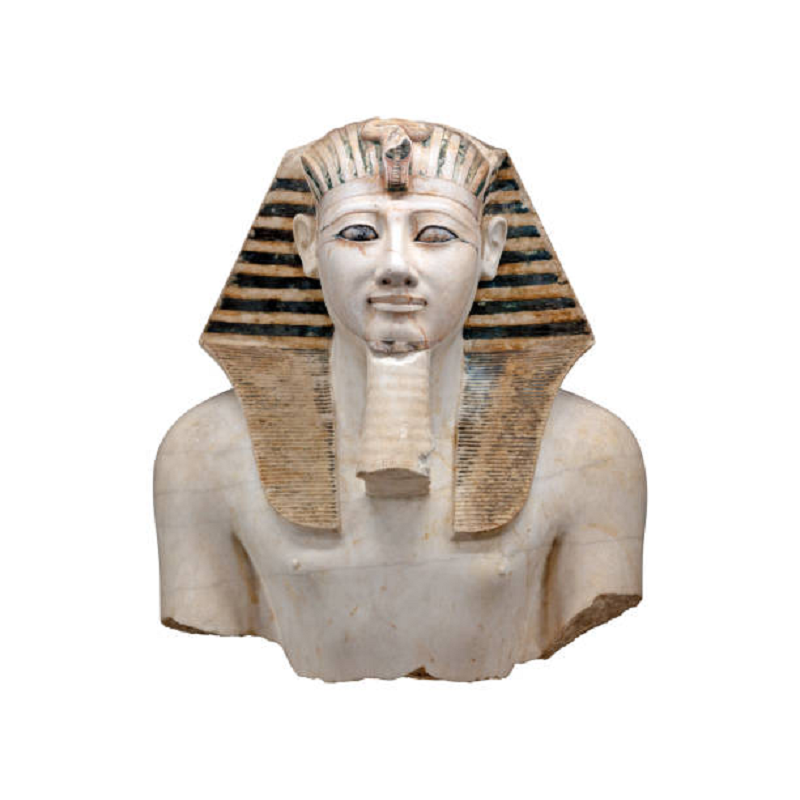
The journey of this statue, however, took an unexpected turn. Divided between continents, the upper body and Nemes headdress reside in the Metropolitan Museum of Art in New York, while the original face rests in the Egyptian Museum in Cairo. This geographical disjunction might have relegated this masterpiece to a fragmented existence, but for the determination of museum curators to rewrite its narrative.
Through meticulous coordination and a shared dedication to preserving cultural heritage, museum authorities orchestrated a historic reunion. Replicas were cast, mirroring the original features of Thutmose III’s face and upper torso. In a gesture of cultural diplomacy, the replica face found its way to the Metropolitan Museum of Art, while the replica upper torso journey to the Egyptian Museum in Cairo. Thus, through the exchange of facsimiles, both institutions were able to display this magnificent piece in its near entirety, allowing visitors to marvel at the splendor of ancient Egypt.
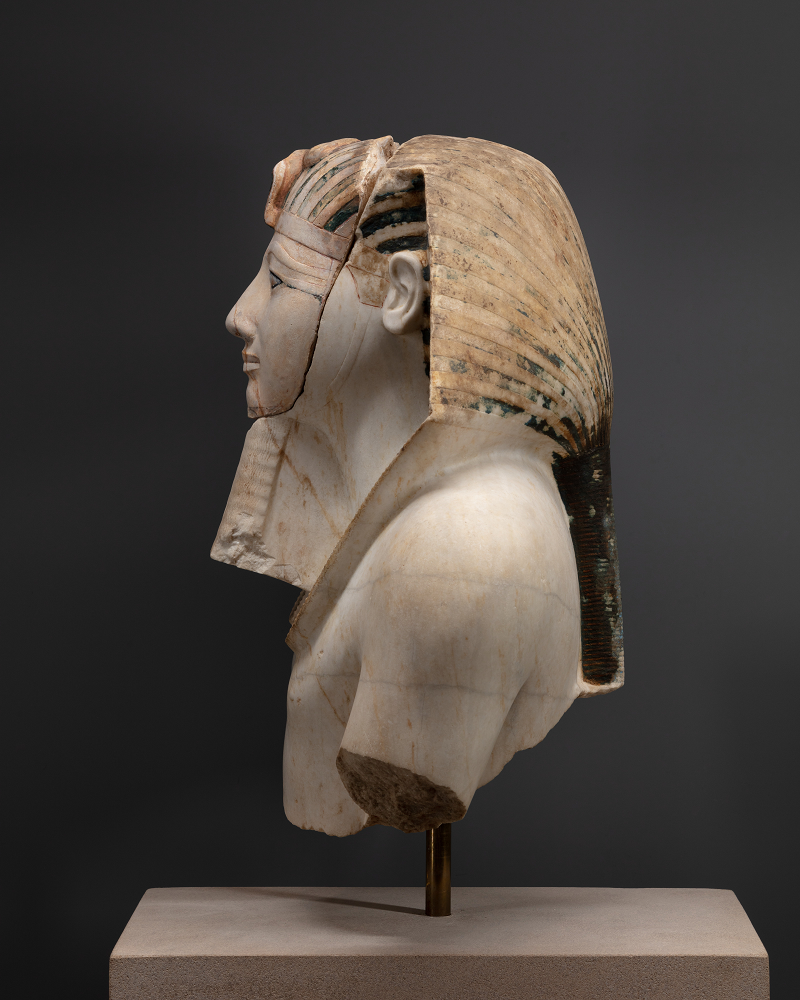
This act of collaboration not only reunited the physical components of the statue but also symbolized a broader commitment to international cooperation in the field of archaeology and cultural heritage preservation. In a world often divided by borders and politics, this gesture serves as a poignant reminder of the power of art and history to transcend barriers and unite humanity in a shared appreciation of our collective past.
As visitors gaze upon the reunited statue of Thutmose III, they are transported back in time to an era of grandeur and ambition. They witness the enduring legacy of a pharaoh whose conquests shaped the course of history, and they bear witness to the ingenuity and craftsmanship of ancient Egyptian artisans. But perhaps most importantly, they are reminded of the importance of preserving and celebrating our shared cultural heritage, for in doing so, we honor the voices of the past and enrich the tapestry of our collective identity.
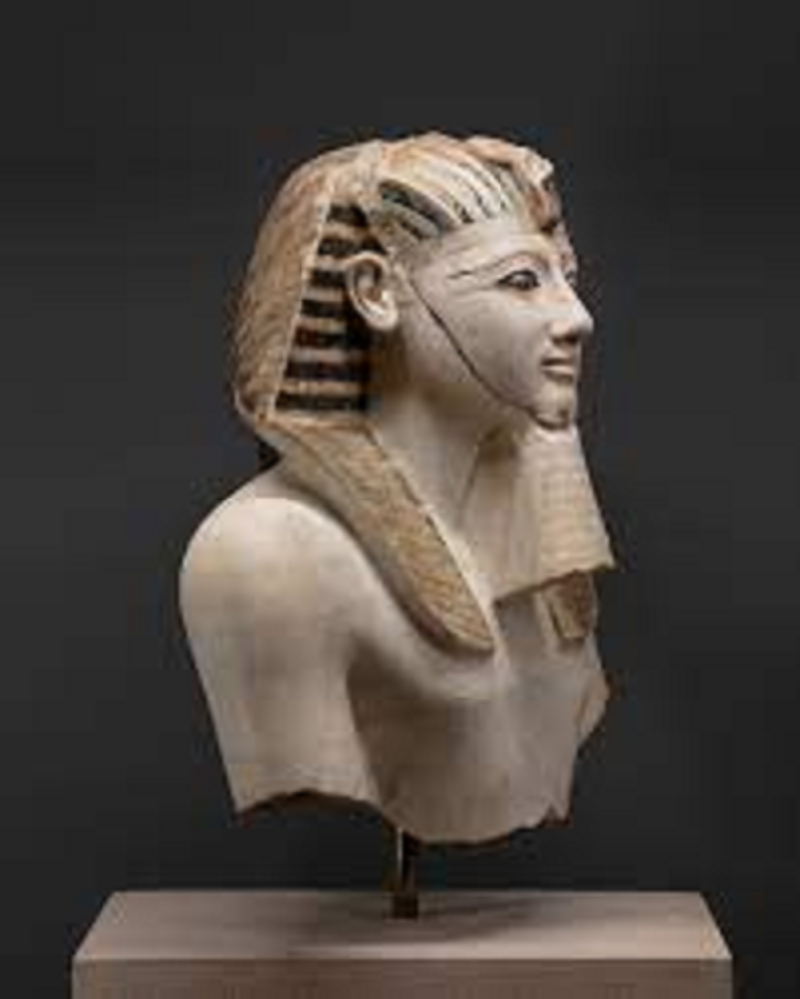
Conclusion
The indurated painted limestone statue of Thutmose III stands as a testament to the power of collaboration and the enduring legacy of ancient Egypt. Through the efforts of museum curators and cultural institutions on opposite sides of the globe, this masterpiece has been reunited, allowing visitors to experience its splendor in its near entirety. As we marvel at the craftsmanship of ancient artisans and contemplate the achievements of a bygone era, let us also reflect on the importance of preserving and protecting our shared cultural heritage. For in the stories of the past, we find echoes of our own humanity, and in the unity of purpose, we forge bonds that transcend time and geography.
